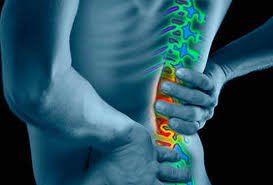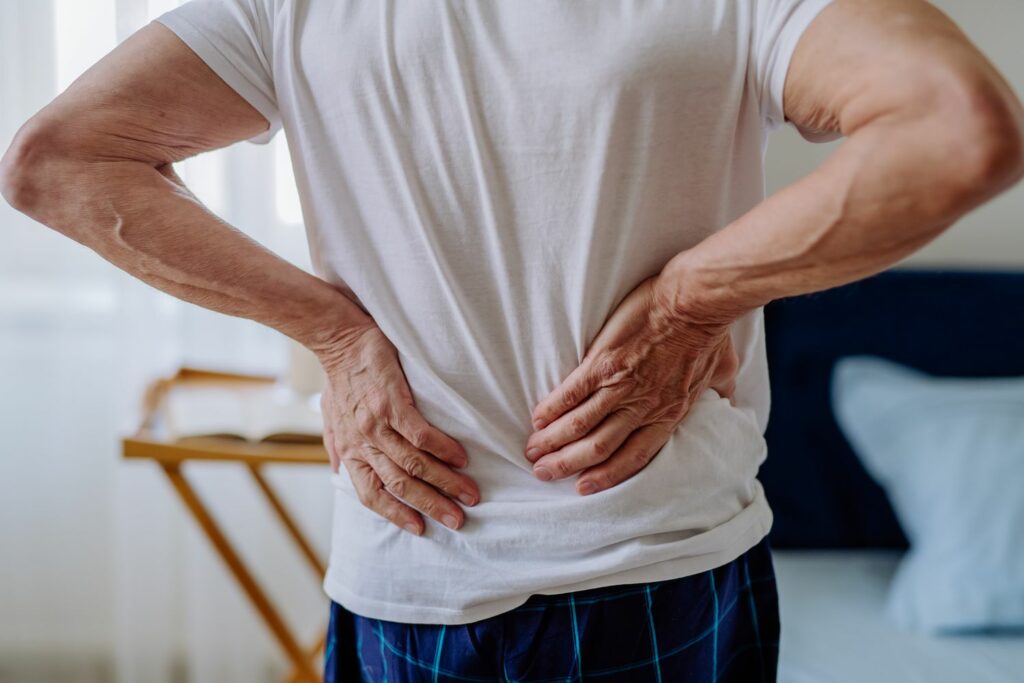Lower back strain is a common ailment that affects millions of individuals worldwide. It occurs when the muscles and tendons in the lower back region are stretched or torn due to excessive force or overuse. This article delves into the various aspects of lower back strain, providing valuable insights into understanding, treating, and preventing this condition effectively.
Contents
- 1 Preventing Lower Back Strain
- 2 Treating Lower Back Strain at Home
- 3 Seeking Professional Help
- 4 Exercises for Lower Back Strain Recovery
- 5 Maintaining a Healthy Back
- 6 Ergonomics and Lower Back Strain
- 7 Alternative Therapies for Lower Back Strain
- 8 Nutrition for Back Health
- 9 Managing Chronic Lower Back Strain
- 10 Exercising Safely with Lower Back Strain
- 11 Yoga and Pilates for Lower Back Strain
- 12 Recovering from Lower Back Strain: Patience and Perseverance
- 13 Conclusion
Understanding Lower Back Strain

Lower back strain can be attributed to various factors, including poor posture, sudden movements, lifting heavy objects incorrectly, and sports-related activities. Prolonged sitting or standing in improper positions can also contribute to the development of lower back strain.
Certain factors increase an individual’s susceptibility to lower back strain. These include age, sedentary lifestyle, obesity, and occupation. Jobs that involve heavy lifting or repetitive movements pose a higher risk of lower back strain.
Recognizing the symptoms of lower back strain is crucial for early intervention. Common signs include localized pain, muscle stiffness, difficulty in bending or standing, and pain that worsens with movement.
Preventing Lower Back Strain
These are some of the ways for preventing lower back strain:
Proper Body Mechanics and Lifting Techniques
Practicing proper body mechanics and lifting techniques is vital for reducing the risk of lower back strain. Techniques such as bending the knees while lifting and keeping the back straight can significantly alleviate strain on the lower back.
Strengthening Exercises for the Lower Back
Engaging in specific exercises to strengthen the lower back muscles can enhance their ability to withstand strain. Incorporating exercises like bridges, pelvic tilts, and leg raises can be beneficial.
Maintaining a Healthy Posture
Maintaining a good posture not only prevents lower back strain but also improves overall spinal health. Being mindful of posture while sitting, standing, or walking can make a significant difference.
Treating Lower Back Strain at Home

Here are some self-care tips that may help alleviate lower back strain:
- Rest: Give your back adequate time to heal by avoiding activities that exacerbate the pain. However, avoid extended bed rest as it may lead to muscle stiffness.
- Ice and Heat Therapy: Apply ice packs to the affected area for the first 48 hours to reduce inflammation and numb the pain. After that, switch to heat therapy (e.g., warm compresses) to relax the muscles and improve blood circulation.
- Over-the-Counter Pain Relief: Nonsteroidal anti-inflammatory drugs (NSAIDs) such as ibuprofen or acetaminophen can help reduce pain and inflammation. Follow the recommended dosage and consult a doctor if you have any medical conditions or concerns.
- Proper Body Mechanics: Pay attention to your posture and body mechanics during daily activities. Avoid lifting heavy objects, and if you must lift something, use proper techniques by bending your knees and keeping your back straight.
- Gentle Exercises: Once the acute pain subsides, gentle exercises and stretches can help improve flexibility and strengthen the back muscles. Consult with a physical therapist to get a personalized exercise plan that suits your condition.
Seeking Professional Help
Some of the ways how you can consult a professional:
When to Consult a Healthcare Professional
If the pain from lower back strain persists or worsens despite home treatment, it’s essential to seek professional medical advice. A healthcare provider can conduct a thorough evaluation and recommend appropriate treatment.
Physical Therapy for Lower Back Strain
Physical therapy plays a crucial role in the recovery process. A skilled therapist can design a personalized exercise plan and provide valuable guidance for rehabilitation.
Other Medical Interventions
In severe cases, medical interventions such as muscle relaxants or corticosteroid injections might be considered to manage pain and inflammation.
Exercises for Lower Back Strain Recovery
Exercise can play a significant role in recovering from lower back strain, but it’s crucial to start slowly and gradually increase the intensity as your back heals. Before attempting any exercises, it’s best to consult with a healthcare professional or a physical therapist to ensure you’re doing the right exercises for your specific condition. Here are some gentle exercises that may aid in lower back strain recovery:
- Pelvic Tilts: Lie on your back with your knees bent and feet flat on the floor. Gently tilt your pelvis upward, pressing your lower back into the floor, and then tilt it downward, arching your lower back slightly. Repeat this movement for several reps.
- Partial Crunches: Lie on your back with your knees bent and feet flat on the floor. Place your hands behind your head or cross your arms over your chest. Slowly lift your shoulders off the floor, engage your core muscles, and hold for a few seconds before lowering back down.
- Cat-Cow Stretch: Get on your hands and knees in a tabletop position. Inhale as you arch your back, lifting your head and tailbone (Cow Pose). Exhale as you round your back, tucking your chin and tailbone (Cat Pose). Alternate between these two positions in a smooth, flowing motion.
Maintaining a Healthy Back
Importance of Regular Exercise
Regular exercise, including activities like walking, yoga, or cycling, is essential for maintaining back health and preventing future strains.
Tips for Preventing Future Lower Back Strain
Implementing proper lifting techniques, avoiding prolonged sitting, and maintaining a healthy weight are among the key strategies for preventing recurrent lower back strain.
Lifestyle Changes for Overall Back Health
Small lifestyle adjustments, such as choosing an ergonomic chair or investing in a supportive mattress, can have a significant impact on overall back health.
Ergonomics and Lower Back Strain
Some of the ways for selecting ergonomics and workplace for lower back strain:
Setting Up an Ergonomic Workstation
Creating an ergonomic workstation helps minimize strain on the lower back while working. This includes adjusting chair height, screen position, and keyboard placement.
Choosing the Right Furniture and Equipment
Investing in ergonomic furniture and equipment that support the natural curvature of the spine can prevent back strain in the long run.
Implementing Ergonomic Practices at Home
Applying ergonomic principles to everyday activities, such as cooking and cleaning, reduces the risk of developing lower back strain.
Alternative Therapies for Lower Back Strain

Other alternative therapies for lower back strain:
Massage Therapy
Massage therapy can help relax tense muscles and alleviate pain associated with a lower back strain.
Acupuncture for Pain Relief
Acupuncture has been shown to provide relief for lower back pain, promoting a sense of relaxation and well-being.
Chiropractic Care
Chiropractic adjustments can assist in realigning the spine and relieving pressure on affected areas.
Nutrition for Back Health
Foods That Support Back Health
A balanced diet rich in nutrients like calcium, magnesium, and vitamins D and K is beneficial for maintaining strong bones and back health.
Anti-Inflammatory Diet for Reducing Strain
Incorporating anti-inflammatory foods, such as fatty fish, leafy greens, and berries, can help reduce inflammation and alleviate back strain.
Hydration and Its Impact on the Back
Staying adequately hydrated is crucial for promoting overall spinal health and ensuring that spinal discs remain hydrated and functional.
Managing Chronic Lower Back Strain
Managing chronic lower back strain requires a comprehensive approach that involves a combination of self-care strategies, lifestyle adjustments, and professional guidance. Here are some tips to help you manage chronic lower back strain:
- Consult a Healthcare Professional: If you haven’t already done so, seek the advice of a healthcare professional, such as a physiotherapist, chiropractor, or orthopedic doctor. They can help diagnose the underlying cause of your chronic back strain and develop a personalized treatment plan.
- Exercise Regularly: Engage in regular low-impact exercises that focus on strengthening the core muscles and improving flexibility. Activities like swimming, walking, and yoga can be beneficial for the back. Always perform exercises with proper form and avoid activities that put excessive strain on your back.
- Physical Therapy: Consider working with a physical therapist who can guide you through specific exercises and stretches that target your back muscles and help alleviate strain. They can also provide manual therapy and other specialized techniques.
Exercising Safely with Lower Back Strain
While following the exercises, follow these steps:
Modification of Workouts
Those with lower back strain can modify workouts to avoid exercises that exacerbate the condition.
Incorporating Rest Days into Exercise Routine
Allowing the body adequate time to rest and recover between workouts is essential for preventing further strain.
Listening to the Body’s Signals
Paying attention to the body’s signals and avoiding activities that cause discomfort is crucial for avoiding further injury.
Yoga and Pilates for Lower Back Strain
Benefits of Yoga and Pilates
Yoga and Pilates are low-impact exercises that can promote flexibility, strength, and relaxation, benefiting those with lower back strain.
Recommended Poses and Exercises
Specific yoga poses and Pilates exercises can target and alleviate lower back discomfort effectively.
Precautions to Take During Practice
Individuals with lower back strain should take precautions while performing yoga and Pilates to avoid exacerbating the condition.
Recovering from Lower Back Strain: Patience and Perseverance

Understanding the Healing Process
Recovering from lower back strain is a gradual process that requires patience and commitment.
Setting Realistic Expectations
Having realistic expectations about recovery time and progress is essential for maintaining motivation.
Celebrating Progress and Milestones
Acknowledging even small improvements in the healing journey can boost confidence and morale.
Conclusion
Lower back strain is a prevalent condition that can be effectively managed and prevented with the right approach. By understanding the causes, symptoms, and treatment options for lower back strain, individuals can take proactive steps to maintain a healthy back. Incorporating exercise, proper ergonomics, and healthy lifestyle habits can significantly reduce the risk of developing lower back strain and support the overall well-being of the back.
If you’re experiencing Back pain, physical therapy for back pain at PhysioMantra can help: Book an online physical therapy session.



